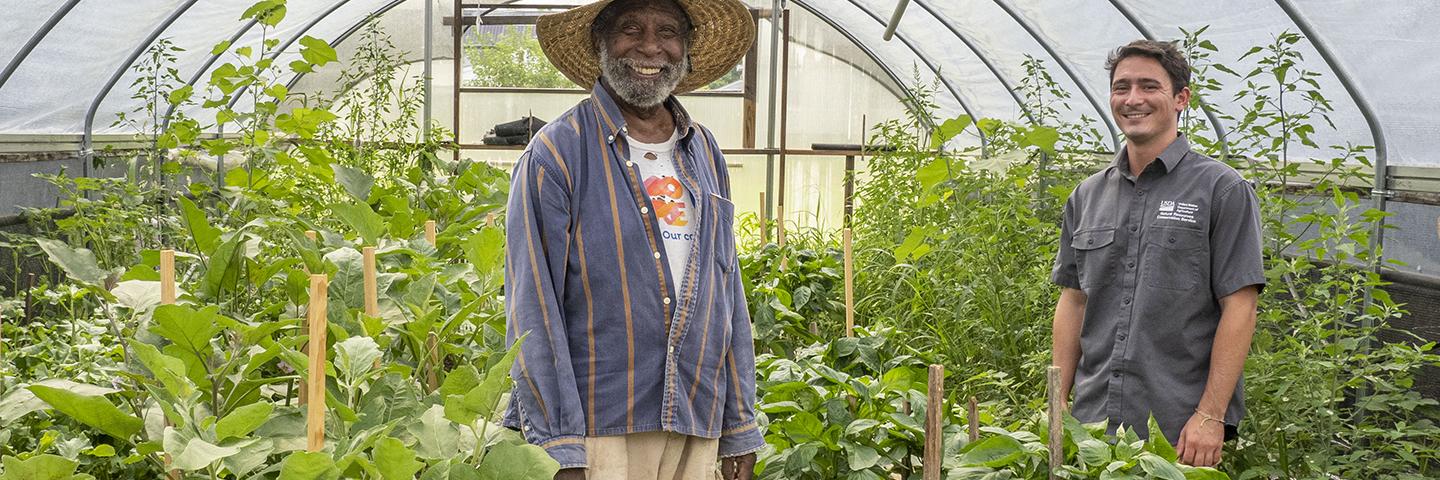
Press Release


A High Tunnel System, commonly called a “hoop house,” is an increasingly popular conservation practice for farmers, and is available with financial assistance through the Environmental Quality Incentives Program (EQIP).
With high tunnel systems, no summer is too short or winter too cold because high tunnels:
High tunnels protect plants from severe weather and allow farmers to extend their growing seasons – growing earlier into the spring, later into the fall, and sometimes, year-round. And because high tunnels prevent direct rainfall from reaching plants, farmers can use precise tools like drip irrigation to efficiently deliver water and nutrients to plants. High tunnels also offer farmers a greater ability to control pests and can even protect plants from pollen and pesticide drift.
A number of soil health practices can be used in high tunnels, including cover crops and crop rotations, which also prevent erosion, suppress weeds, increase soil water content, and break pest cycles.
Perhaps the best thing about high tunnels is that they help farmers provide their communities with healthy local food for much of the year – food that requires less energy and transportation inputs.
Supporting practices may be needed to ensure that resource concerns associated with implementing and managing high tunnel systems are addressed. These conservation practices may include:
Ready to make a high tunnel system part of your operation? Check out Apply for EQIP.
Contact your local service center to start your application.
Do you farm or ranch and want to make improvements to the land that you own or lease?
Natural Resources Conservation Service offers technical and financial assistance to help farmers, ranchers and forest landowners.

To get started with NRCS, we recommend you stop by your local NRCS field office. We’ll discuss your vision for your land.
NRCS provides landowners with free technical assistance, or advice, for their land. Common technical assistance includes: resource assessment, practice design and resource monitoring. Your conservation planner will help you determine if financial assistance is right for you.
We’ll walk you through the application process. To get started on applying for financial assistance, we’ll work with you:
Once complete, we’ll work with you on the application, or CPA 1200.
Applications for most programs are accepted on a continuous basis, but they’re considered for funding in different ranking periods. Be sure to ask your local NRCS district conservationist about the deadline for the ranking period to ensure you turn in your application in time.
As part of the application process, we’ll check to see if you are eligible. To do this, you’ll need to bring:
If you don’t have a farm number, you can get one from USDA’s Farm Service Agency. Typically, the local FSA office is located in the same building as the local NRCS office. You only need a farm number if you’re interested in financial assistance.
NRCS will take a look at the applications and rank them according to local resource concerns, the amount of conservation benefits the work will provide and the needs of applicants. View Application Ranking Dates by State.
If you’re selected, you can choose whether to sign the contract for the work to be done.
Once you sign the contract, you’ll be provided standards and specifications for completing the practice or practices, and then you will have a specified amount of time to implement. Once the work is implemented and inspected, you’ll be paid the rate of compensation for the work if it meets NRCS standards and specifications.